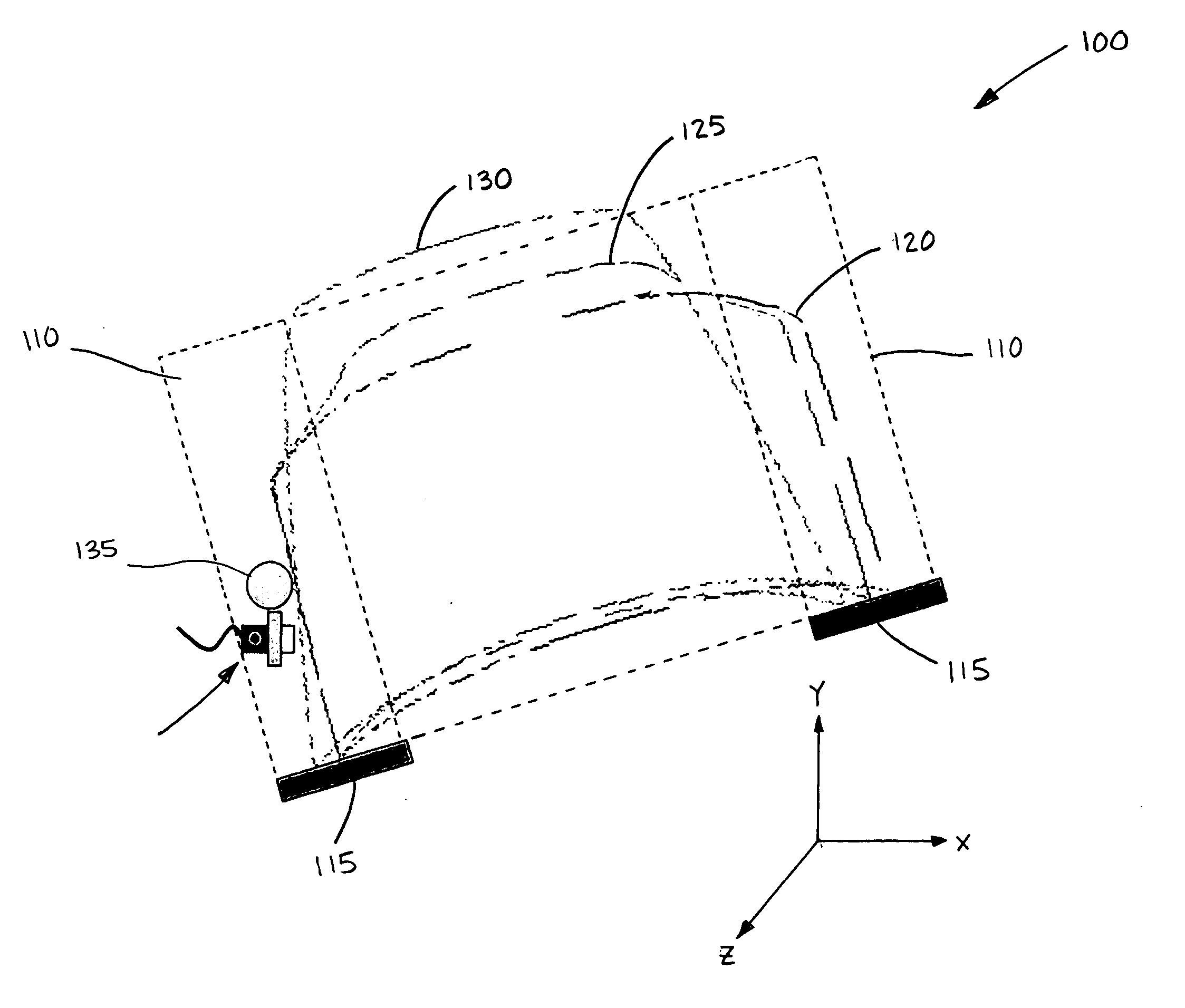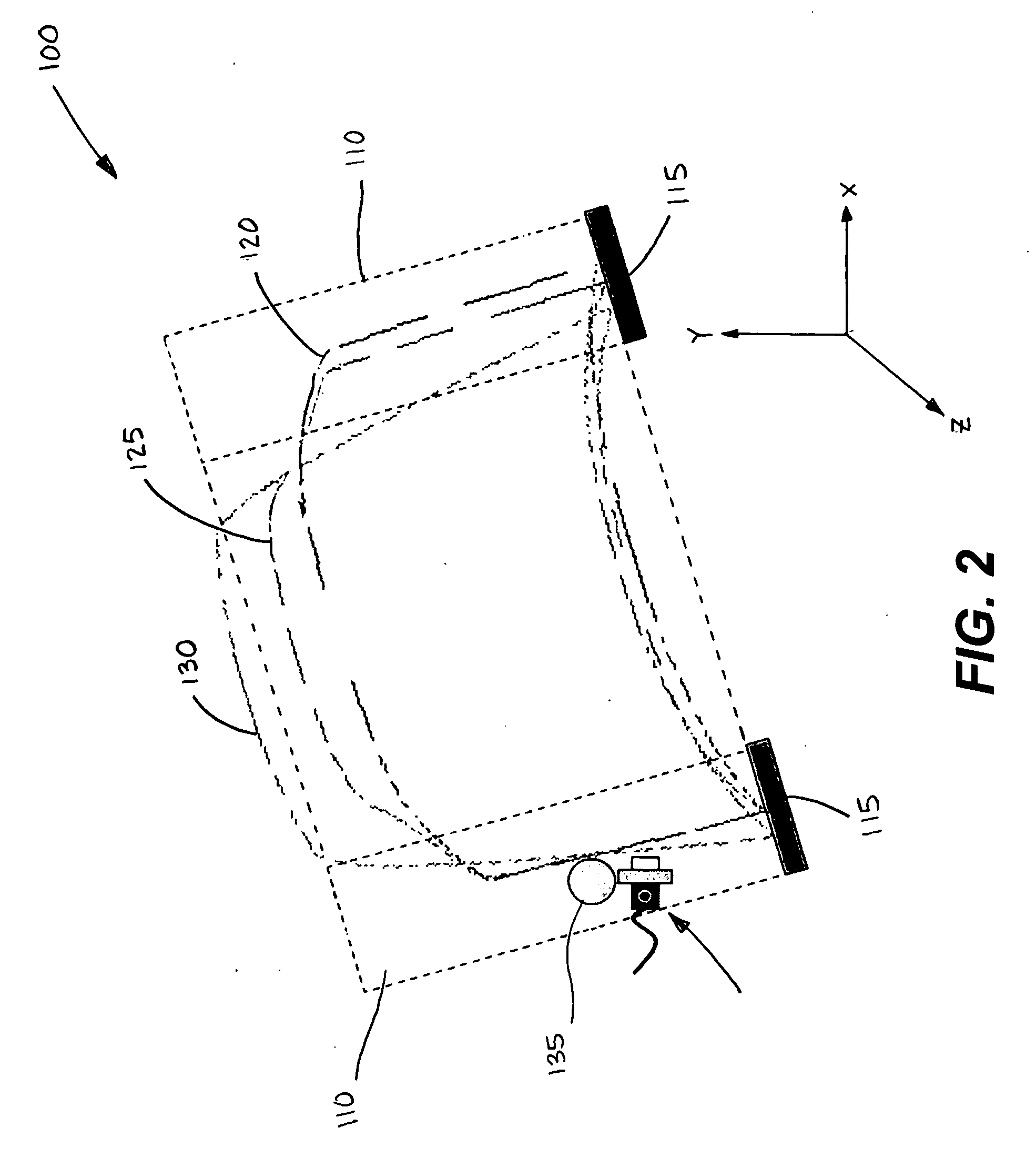Robotic vehicle panel alignment system and process
- Summary
- Abstract
- Description
- Claims
- Application Information
AI Technical Summary
Benefits of technology
Problems solved by technology
Method used
Image
Examples
Embodiment Construction
)
[0027] A known vehicle panel alignment fixture 5 is shown in the top plan view of FIG. 1. Such fixtures may exist to orient / position a variety of panels, but in the particular exemplary embodiment of FIG. 1, the fixture is used to orient / position a vehicle hood skin 30. The fixture may make use of a number of panel supports 35 or even a form fitting part “nest” to receive the hood skin—although such is not shown in detail in FIG. 1 for reasons of clarity.
[0028] As shown, the alignment fixture 5 includes a number of actuator pairs 10, 15, 20, 25 that are used to manipulate the hood skin 30 once it has been placed on the fixture 5. The opposing actuator pairs 10, 15 located at the top and bottom of the vehicle hood skin 30 are used to move the hood skin along the “Y” axis as indicated by the like-labeled arrow. Similarly, opposing actuator pairs 20, 25 located at the left and right sides of the vehicle hood skin 30 are used to move the hood skin along the “X” axis as indicated by th...
PUM
| Property | Measurement | Unit |
|---|---|---|
| Angle | aaaaa | aaaaa |
| Vacuum | aaaaa | aaaaa |
Abstract
Description
Claims
Application Information
 Login to View More
Login to View More - R&D
- Intellectual Property
- Life Sciences
- Materials
- Tech Scout
- Unparalleled Data Quality
- Higher Quality Content
- 60% Fewer Hallucinations
Browse by: Latest US Patents, China's latest patents, Technical Efficacy Thesaurus, Application Domain, Technology Topic, Popular Technical Reports.
© 2025 PatSnap. All rights reserved.Legal|Privacy policy|Modern Slavery Act Transparency Statement|Sitemap|About US| Contact US: help@patsnap.com



